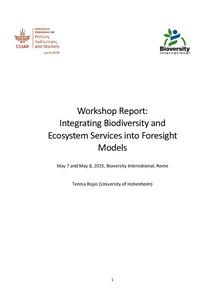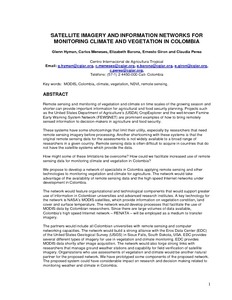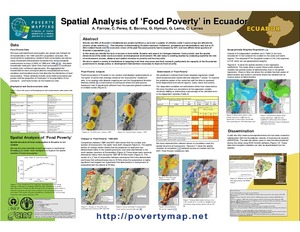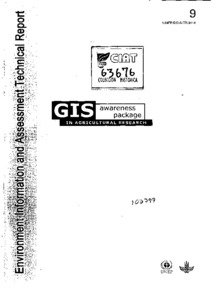Report. Workshop on Integrating Biodiversity and Ecosystem Services into Foresight Models.
The workshop held at Bioversity International in Rome, Italy, from 7 – 8 May 2015
Brought together a group of researchers and members of CGIAR centers, and other
institutions who are interested in modelling biodiversity and ESS using geospatial
data. The workshop focused on modeling at different scales: household/farm level, the agricultural sector level and the economy – wide level, in order to explore trade - offs and complementariness between productivity, nutrition and ESS.
Seeds of hope project
During the week beginning the 25th of October 1999 in Honduras and Nicaragua, Hurricane Mitch devastated large areas in the cities, razed bridges and highways, and left some regions isolated, blocking aid efforts. The production of basic grains that are obtained in the hillsides, where the poorest farrners live, suffered serious damage. Winds and floodwaters badly hit the productive areas where some farmers were harvesting their crops and others were planting. Great losses were caused, affecting the economy and production of food of these two countries.
Sistem informasi geografis untuk pengelolaan sumberdaya alam
Sistema georreferenciado de indicadores de calidad de suelos para los Llanos Orientales de Colombia : Estudio de caso: Municipio de Puerto López, Meta
Geosoil permite almacenar, consultar e interpretar información tanto del suelo como de su entorno biofísico a diferentes escalas: parcela, finca, comunidad, municipio, departamento, región, país. Opera a partir de una base de datos relacional elaborada en ACCES 2000, compuesta por una serie de tablas principales estructuradas con información a diferentes niveles jerárquicos que permiten la caracterización de las propiedades del suelo.
Spatial analysis to support geographic targeting of genotypes to environments
Spatial analysis of 'food poverty' in Ecuador
Spatial decision support for selecting tropical crops and forages in uncertain environments.Thesis (Ph.D.)
Spatial analysis of intraspecific diversity: a point-centred approach
Spatial analysis of socio-economic issues: Gender and GIS in Nepal
Spatial patterns in socioeconomic data reveal issues and trends that would otherwise be missed by data aggregation to political or other units. Geographic Information System (GIS) tools provide display and analysis capabilities that are underutilized by many social scientists. The present article combines field-based surveys that maintain locational information with GIS tools to examine gender roles, responsibilities, and workloads in a spatial context for a case-study watershed in Nepal. Adult women outworked men by an average of 3.8 hours per day.







